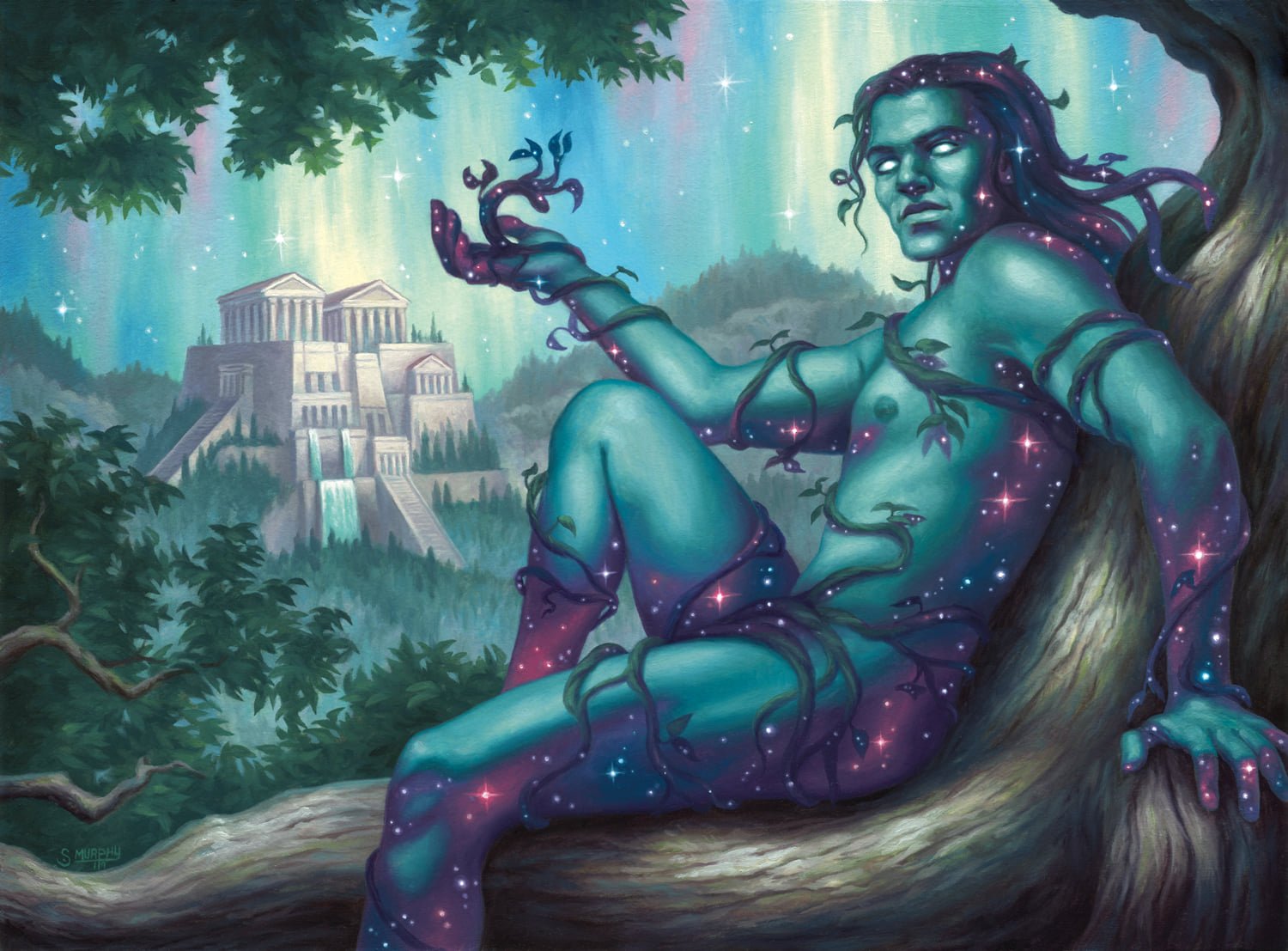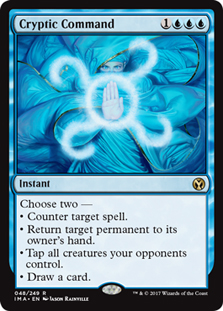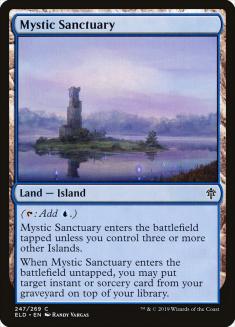It’s official: Amulet Titan is the best deck in Modern, and no, it isn’t particularly close.
That’s mostly thanks to Dryad of the Ilysian Grove and how it allows the archetype to have more acceleration, better mana, and a different combo kill. Not having to rely entirely on Primeval Titan is a bonus as well.
At SCG Richmond, I played the Modern seat with Simic Ramp, which was incredible before people tuned their Amulet decks and the rest of the format chose decks they hoped would beat Amulet. I played against a sea of creature combo decks and pseudo-mirrors where my opponents had Amulet of Vigors, and I desperately wished I wasn’t relying on the virtual kills of Simic Ramp.
Creatures (16)
Lands (30)
Spells (14)

I wasn’t pleased with my 5-3 record but I learned what I needed to do, which was either play Amulet, play something that smashed Amulet, or alter my strategy entirely. Many of my games were over before I had a chance to cast Primeval Titan (often in my favor thanks to Dryad and Valakut), which reminded me of this gem of mine.
Creatures (2)
Lands (26)
Spells (32)

This whole ramp obsession started with me trying to use Castle Garenbrig to cast Primeval Titan on Turn 3, but that’s been outmoded by a lot of different factors. There’s merit to ignoring Primeval Titan altogether and playing a fairer, manual Valakut game.
Creatures (16)
- 2 Azusa, Lost but Seeking
- 4 Sakura-Tribe Scout
- 2 Ramunap Excavator
- 4 Arboreal Grazer
- 4 Dryad of the Ilysian Grove
Lands (30)
Spells (14)

Splicing the Dryad of the Ilysian Grove / Valakut, the Molten Pinnacle engine with the Mystic Sanctuary / Cryptic Command engine is something 2011 Gerry would have been very pleased with. The end result is a deck that ramps but doesn’t need Primeval Titan to win the game. Instead, we can lock our opponent out of the game in various ways, including using Mystic Sanctuary to re-use Cryptic Command.
It was a fine plan but something wasn’t quite right. I didn’t have enough ways to filter through my draws, and since my top-end wasn’t game-winning, things needed to come together just right. Oracle of Mul Daya would have been helpful, but so would have playing something like Explore instead of Sakura-Tribe Scout. Unlike the Primeval Titan decks, we’re not rushing to six mana, so taking our time is perfectly reasonable. We just need to get to six mana in time to start shooting things with Valakut and we have countermagic to slow our opponent down.
Seeing this list pop up on Magic Online made me very happy, since I knew I was onto something.
Creatures (15)
- 4 Birds of Paradise
- 2 Tireless Tracker
- 1 Ramunap Excavator
- 4 Uro, Titan of Nature's Wrath
- 4 Dryad of the Ilysian Grove
Planeswalkers (4)
Lands (26)
Spells (15)

It was even fairer than the deck I was playing!
Adding Thought Scour, Wrenn and Six, and Uro, Titan of Nature’s Wrath into the mix made a lot of sense. I brought Tireless Tracker in against basically everyone and it typically over-performed, so I’m happy to see it in the maindeck. The abundance of Ghost Quarters and Ashiok, Dream Renders in the sideboard makes it clear that this player respects Amulet Titan and that’s the way it should be right now.
While this decklist is intriguing and almost functions like Death and Taxes that happens to have a broken end-game, my mind kept wandering to my old Wargate decks to see if I could build something similar. I might return to something like this later, but there was something I had to do first.
This might be my final form.
Creatures (12)
- 1 Oracle of Mul Daya
- 2 Arboreal Grazer
- 3 Ice-Fang Coatl
- 2 Uro, Titan of Nature's Wrath
- 4 Dryad of the Ilysian Grove
Lands (28)
Spells (20)

I’m not playing Wargate quite yet but I’m close. Wrenn and Six is probably a stronger splash regardless but you can deal with most problems in Simic.
All this deck wants to do, similarly to the Wargate deck, is keep its opponent off-balance long enough to start Lightning Bolting things with Valakut. In order to get to that game state with enough resources, we mostly avoid using cards that strictly trade one-for-one. Things that replace themselves, such as Remand, Cryptic Command, and Ice-Fang Coatl, are exactly what you need.
Uro, Titan of Nature’s Wrath and Oracle of Mul Daya can provide some hard card advantage later if necessary and Waterlogged Grove allows you to cash in some of your lands if you start flooding. Simic Growth Chamber allows you to reach four mana despite only drawing three lands and can help re-use Mystic Sanctuary. It also bounces itself in the late-game when you have Valakut but run out of lands to play.
You could make the argument that the deck doesn’t have to be all velocity and could afford to play a couple of copies of Dismember in the maindeck to help the Amulet matchup. That’s probably correct, especially considering Ice-Fang Coatl doesn’t do much blocking at the moment.
With Growth Spiral and Ice-Fang Coatl in the deck, Turn 1 Valakut, the Molten Pinnacle isn’t an optimal play. Since the deck doesn’t have many three-drops, playing it on Turn 3 is with another two-drop is fine. It’s usually the best land to put onto the battlefield from an Explore, Growth Spiral, or Dryad too. Cascade Bluffs is to make casting Cryptic Command easier once you have a Valakut on the battlefield. Flooded Grove helps when trying to cast Cryptic Command with Simic Growth Chamber.
If you can’t quite piece everything together, you also have access to Cryptic Command and Mystic Sanctuary, which is fairly incredible. Sometimes it can buy enough turns to get all the pieces together. Being able to lock up the mid-game by always having access to a counterspell if you need it is also invaluable.
This version loses some of the utility by cutting Tolaria West but you need two mana untapped on Turn 2 when you’re not ramping with one-drops. A cleaner manabase is a better way to go about things, at least in this deck. You lose out on the consistency of being able to find all your pieces but you make up for it with all the cantrips. You’ll also have more gas on average, some of which is interaction, so you’ll be able to play longer games if necessary.
At first glance, you might think that this deck is not favored against Amulet Titan. The second glance makes you think that too. Some playtesting confirms it.
So, what are we doing here?
Honestly, if you want to beat Amulet, play the Wrenn and Six / Ghost Quarter deck. Get some Dismembers in your deck for Dryad of the Ilysian Grove and maybe Force of Negation for Amulet itself if you can. Otherwise killing their Azusas and Dryads should slow them down enough for the land destruction to take over. Eli Kassis Dimir Whirza deck also seems quite good against Amulet.
With the above decklist, you have countermagic to interact with Amulet, which can be good enough due to their low Cavern of Souls count. I wouldn’t expect to counter every Primeval Titan they cast, though. You need to play the role of a Fish deck, keeping them off-tempo until you can set up a lethal Dryad of the Ilysian Grove sequence of turns. After sideboarding, you have Aether Gust, Force of Negation, and Ashiok, Dream Render to make their life difficult.
It might not be the best choice against Amulet Titan but it’s exactly the type of deck I love to play and it’s arguably stronger against the rest of the field than the Wrenn and Six version. At the end of the day, it’s my column and I can write about whatever I want. At least I’m realistic about it.
Go forth, make land drops, and enjoy the hell out of it.




